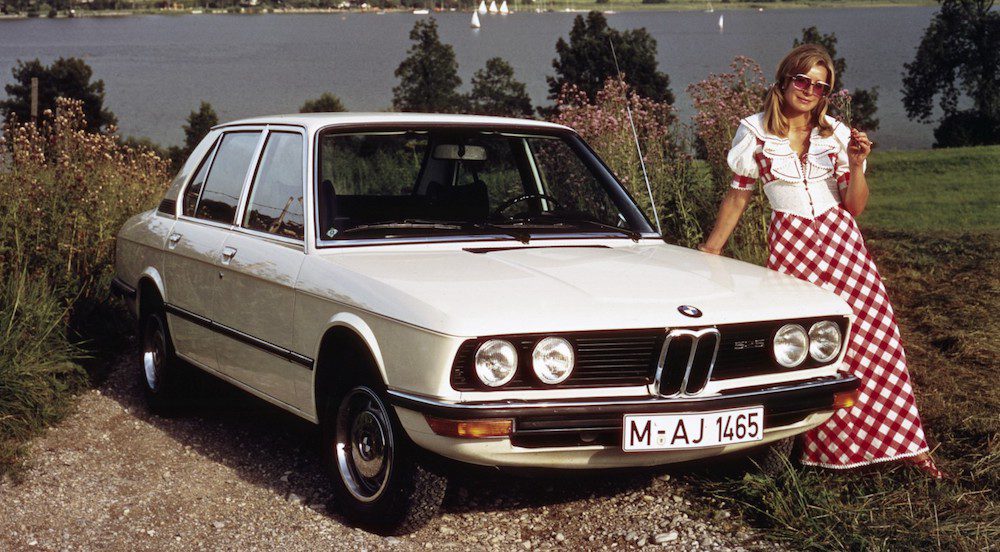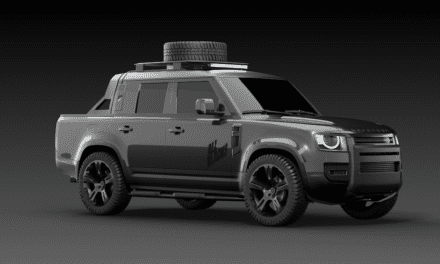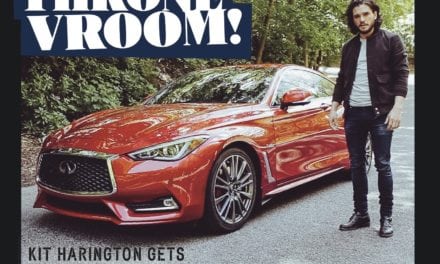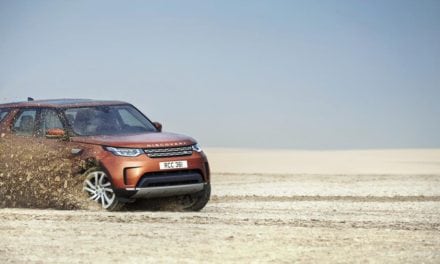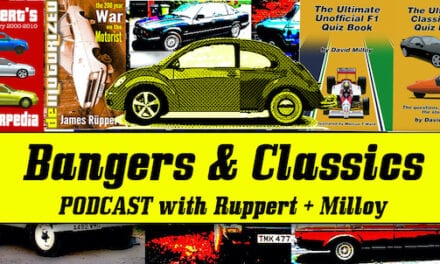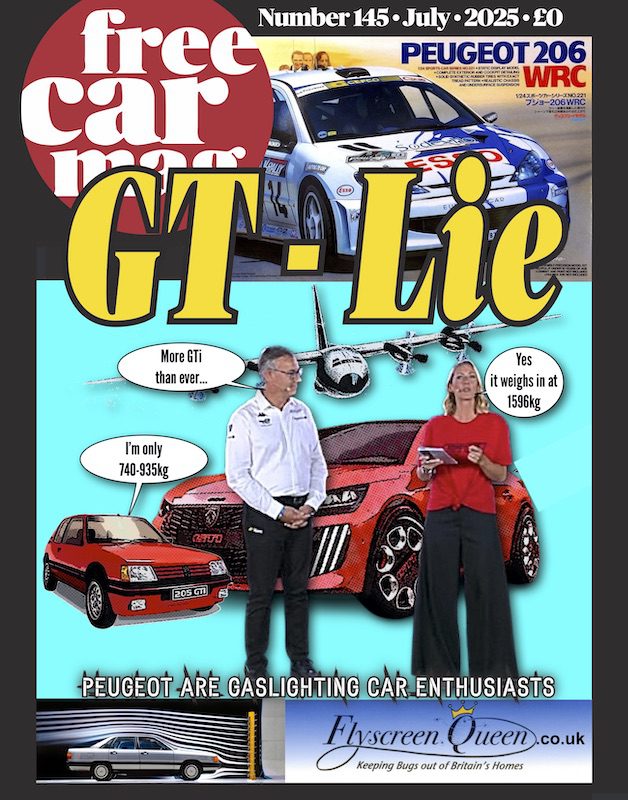So what is the best car in the world? When BMW get their hands on the Rolls Royce Spirit of Ecstasy maybe the world will have to pay a bit more attention. In the real world though, the best car is usually the best all rounder. So when it comes to a car that is refined, spacious, sporty, practical and classy there is only one, the BMW 5 series. That’s been true since the E34, but back in the ’70s the all new 5 series had to establish itself because the New Class was a tough act to follow. Yet the E12 5 series managed to set a quality, sportiness and style for an upmarket middle sized executive car that every other manufacturer has copied. Not only that with 5 BMW proved how far they could develop exciting performance variants, hence the first M series in the shape of the M535i.
The E12 is BMW’s least heralded car, yet it deserves a very special place in their history. Here’s why.
A New Class Act
1972 was an important year Munich and BMW. It was the year that the City got the Olympics. It was also the year that BMW’s magnificent four cylinder building was completed along with the adjacent egg cup shaped museum. 1972 also marked the introduction of the company’s most important models, the 5 series. In came a new model identification system and a four door 520 saloon to replace the 1800/2000. So 5 identified the body size and the 20 stood for the 2.0 litre engine last seen in the 2000tii but with redesigned trispherical cylinder heads like the sixes. It was available as a 115bhp twin carb unit, or with mechanical fuel injection which produced 130bhp and was badged 520i. Paul Bracq’s lines looked, crisp, fresh and less boxy than the old New Class. Slightly longer by 5 inches, yet an inch narrower the 520 was a heavy car at 2780 pounds and the 520I 2820. That meant it was relatively slow getting to 60mph in just over 11 or 12 seconds depending on whether it was a 520 or 520i. Mpg averaged around 22 which was not that impressive. Like the old new class there were MacPherson struts, but now they are angled rearwards by 12 degrees and there was more wheel travel for a better ride.
The 5 series became a serious contender in 1973 with the arrival of the 525. Always destined to accommodate a 6-cylinder engine it came from the 2500 and produced 145bhp. In February 1975 the 165bhp 2.8 was installed. Both models had rear disc brakes, but neither was that economical, hence the arrival of the fuel crisis inspired 518 in 1974. This used the 1766cc engine from the old 1800 and actually returned worse fuel consumption than a 520.
Born for the USA
In 1977 the 5 series got a mild makeover as the kidney grille was raised, the bonnet got a central ridge, there was a tad more chrome around the grille and at the back there were new tail lights, whilst he fuel flap was relocated on the nearside wing. More importantly the 528I. In the US market Audi had emerged as serious rivals to the 5 series and obviously the smaller Mercedes. The 5000, was a version of the European 100 and sold rather well. It frightened, or rather intrigued BMW enough to consider a front wheel drive research programme. So the 2.0 litre M-60 unit was reengineered for transverse operation. They built several prototypes, but did not take the idea any further. It would have been interesting even if the front drive approach would have gone against the company’s long held rear wheel drive is good, front wheel drive is less satisfactory statements in press releases and advertisements. Still the US market did get a different model in the shape of the big engined 530I which was the first BMW created specifically for that market.
Featuring a detuned version of the 2985cc unit it produced 176bhp, got to 60mph in just over 10 seconds and returned 19 mpg. It was regarded as something of a class act and a real rival for the equivalent Mercedes. However, the 528I that replaced it was faster getting to 60mph in just over 8 seconds and more frugal at around 22mpg.
M is for M535I
In the beginning there was the M1. Trouble was you had to be a Formula One driver in the Procar series, very rich or very patient if you wanted to buy one. Essentially it was difficult to pop down to your local showroom and acquire an M car. Obviously BMW thought that this situation should be rectified. So the series that BMW chose as the M car for the people was the E12.
This decision was not as bizarre at it at first seems. In the beginning the Motorsport division had used the 5 series as their basis for customer specials. As an employee at the former BMW concessionaires I can vouch for the appearance of factory fresh CSL engined E12 in the undergorund car park that belonged to the Chairman. Built in 1974 it had uprated suspension with roll bars and specially valved Bilstein shock absorbers. Certainly there are records of official Motorsport makeovers in 1978 for the E12s fitted with a 197bhp 633 CSi engines along with close ratio gearboxes and limited slip diffs. It was inevitable then that in 1979 the 100% official M car was an E12 bearing the M535I badgework. Interestingly under the bonnet was a version of the M49 engine last seen amidships in the M1 and providing the power for the 635Csi. The state of tune was more responsible, but then the 218bhp and 224lb.ft of torque produced at the 4,000rpm by the 3.5 litre unit was not to be sniffed at. The close ratio gearbox with a dogleg first was similar to the unit available with the 528i but with a taller final drive. The suspension was standard except for some specially prepared Bilstein dampers. Bringing it all to a halt were ventilated front and solid rear discs plus the four piston calipers. In speed terms you could get to within a whisker of 140mph and 0 to 60mph in a fraction over 7 seconds.
Quicker than the heavyweight 635I the most noticeable thing about the M535I was just how unnoticeable it actually was. The understated M class demeanour started here. The wheels were BBS cross spoke alloys and at 6.5″ wider, there was an air dam at the front and a black lip on the bootlid (both deletable, but otherwise there was little to distinguish it from a specced up 528i. If you wanted to draw attention to yourself there was always the option of those distinctive Motorsport stripes. Inside Recaros were standard along with a leather trimmed sports wheels that came from the M1. Electric windows, central locking, sunroof and electric wing mirrors were all part of the package.
Just 1410 were made with 450 right hookers landing in Blighty before production was discontinued in 1981. The principle had been established, the 5 series had every right to be branded as a super saloon.
Alpinaed E12s
Just as the 5 series package appealed to the Motorsport division, Alpina also thought that there was plenty of room for improvement and explosive performance, hence the B7. Previously offering two packages the B6, a 200bhp 6 cylinder and the B2 a 230bhp 3.0 litre, Alpina took the turbo route with the full production B7 in 1978. The 3.0 litre car produced 300bhp which translated into a 0-60 time of under 6 seconds whilst the top speed was 155mph. If you thought that was impressive Alpina also created a limited edition B7S in 191 and ’82. 60 of these cars finished in Sapphire Blue with those distinctive Alpina stripes finished in gold had a turbocharged 3.5 litre unit which produced 330bhp.
E12 on the track
Not the obvious track weapon the E12 may not have been an official racer like the CSLs, but the factory did give limited support. In the UK the TWR group was partly founded on the back of racing 5 series. In 1976 Tom Walkinshaw approached BMW and suggested that the 5 series might make a good prospect. Aimed at Group 1 saloon action in the UK, Belgium and France BMW homologated the US 530I producing around 250bhp. Some class wins in Europe with strong performances in the UK and third place in the 1978 Spa 24 hours were the high points for a car that was never really intended for competition.
By 1981 the E12 looked tired, but it had done its job of establishing BMW as the maker of stylish and sporty executive saloons. Unfortunately the E28 did not move the concept on much further. Apart from the stunning M5 it was the next E34 generation that broke new ground, just as the E12 had done in 1972. There aren’t many around now to remind you how good they really were, but if E12 did nothing else it introduced us to the best and most exciting letter in the alphabet, M.

